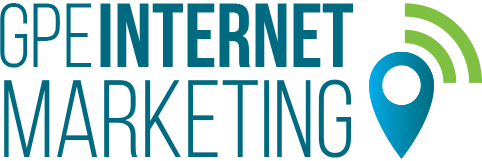Creating a brand-new WordPress website requires careful consideration of security, optimization, and speed. As your SEO expert, I’ve compiled a comprehensive guide to help you navigate through the essential steps and recommended plugins. By following these expert suggestions, you’ll be well on your way to establishing a website that is not only secure but also optimized for maximum performance and fast loading speeds.
Section 1: Setting the Foundation
- Choose a Reliable and Secure Hosting Provider: To start off, opt for a reputable hosting provider that offers robust security measures and reliable performance. Look for providers like SiteGround, Bluehost, or WP Engine.
- Keep WordPress and Plugins Up to Date: Regularly updating your WordPress installation and installed plugins is crucial to ensure you have the latest security patches and feature enhancements.
Section 2: Enhancing Website Security
- Use a Secure Theme: Select a well-coded, reputable theme from trusted sources like the WordPress.org Theme Directory or premium theme providers such as StudioPress or Elegant Themes. Steer clear of nulled or pirated themes, as they often contain malicious code.
- Install a Security Plugin: Add an extra layer of security to your website by installing a security plugin like Wordfence, Sucuri Security, or iThemes Security. Configure the plugin to enable features such as login protection, malware scanning, and firewall.
- Enable SSL/HTTPS: Install an SSL certificate to enable HTTPS encryption, ensuring secure data transmission and boosting your site’s credibility. Consider using Let’s Encrypt, a popular and free SSL certificate provider.
- Implement Strong Login Credentials: Protect your website by using unique and complex usernames and passwords for your WordPress admin account. Avoid common usernames like “admin” and consider using a password manager to generate and store secure passwords.
- Limit Login Attempts: Install a plugin like Login Lockdown or Limit Login Attempts Reloaded to restrict the number of login attempts from a single IP address. This helps protect your website from brute-force attacks.
- Enable Two-Factor Authentication (2FA): Add an extra layer of security to your login process by using a plugin like Two-Factor or Google Authenticator. This requires users to provide a second form of verification, such as a code generated on their mobile device.
Section 3: Optimizing Website Performance
- Optimize Images: Large images can significantly slow down your website. Utilize an image optimization plugin like Smush or EWWW Image Optimizer to compress and optimize your images without compromising quality.
- Implement Caching: Install a caching plugin such as WP Rocket, W3 Total Cache, or WP Super Cache. Caching plugins generate static HTML versions of your pages, reducing server load and improving loading times.
- Minify CSS and JavaScript: Combine and compress your CSS and JavaScript files using a plugin like Autoptimize or WP Minify. This reduces file size and the number of HTTP requests, resulting in faster loading times.
- Enable Lazy Loading: Improve initial page load times by installing a lazy loading plugin like Lazy Load by WP Rocket or WP-Optimize. This defers the loading of images and videos until they are visible in the user’s viewport.
- Optimize Database: Clean up and optimize your WordPress database using a plugin like WP-Optimize or WP-Sweep. This removes unnecessary data and improves overall site performance.
- Use a Content Delivery Network (CDN): Leverage a CDN to cache your website’s static content on servers distributed worldwide. This reduces server load and improves global loading times. Popular CDN providers include Cloudflare, StackPath, and KeyCDN.
Section 4: Additional Best Practices
- Regularly Backup Your Website: Ensure the safety of your website by installing a reliable backup plugin like UpdraftPlus or BackupBuddy. Automate the backup process to protect your files and database. Store the backups securely off-site or in the cloud for added peace of mind.
By implementing the suggestions and recommendations outlined in this guide, you can create a secure, optimized, and fast-loading WordPress website from the ground up. Remember to choose a reputable hosting provider, keep your WordPress installation and plugins up to date, and prioritize website security with strong login credentials, SSL encryption, and security plugins.
Additionally, optimize your website’s performance by optimizing images, implementing caching and lazy loading, minifying CSS and JavaScript, and leveraging a content delivery network. Regularly optimizing your database and backing up your website further ensure its stability and security.
If you need assistance with website optimization or would like a free website evaluation, don’t hesitate to reach out to GPE Internet Marketing. Our experienced team of SEO experts is here to help you achieve the best possible results for your WordPress website.
Ready to Transform Your Company Website?
Contact GPE Internet Marketing today to learn how we can optimize your website for maximum security, performance, and loading speed. Request a free website evaluation to uncover opportunities for improvement and take your WordPress website to the next level.
Remember, a secure, optimized, and fast-loading website not only improves the user experience but also plays a crucial role in search engine rankings and overall online success. Take the necessary steps now and enjoy the benefits of a website that stands out from the competition.

